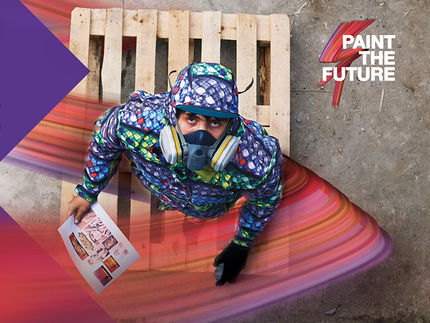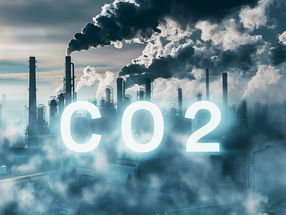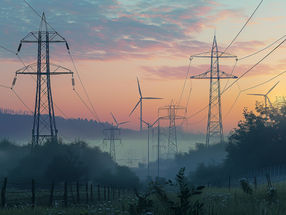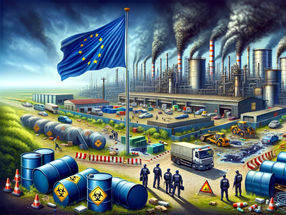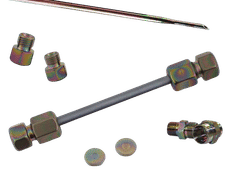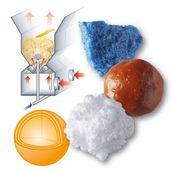REACH Candidate List of Substances of Very High Concern for Authorisation Grows
Advertisement
The European Chemicals Agency has added 14 chemical substances to the Candidate List of Substances of Very High Concern (SVHC) for authorisation. Companies manufacturing or importing these substances need to check their potential obligations that result from the listing. The substances which ECHA added on the Candidate List are listed below. Decisions on whether the substances need to be subject to authorisation will be taken later.
Companies may have legal obligations resulting from the inclusion of substances in the List. These obligations can apply to the listed substances on their own as well as in mixtures and in articles. A short summary of the obligations is available on ECHA´s website.
1) Anthracene oil (292-602-7 90640-80-5): Persistent, bioaccumulative and toxic; Very persistent and very bioaccumulative; Carcinogen, category 2
2) Anthracene oil, anthracene paste, distn. lights (295-278-5 91995-17-4): Persistent, bioaccumulative and toxic; Very persistent and very bioaccumulative; Carcinogen, category 2; Mutagen, category 2
3) Anthracene oil, anthracene paste, anthracene fraction (295-275-9 91995-15-2): Persistent, bioaccumulative and toxic; Very persistent and very bioaccumulative; Carcinogen, category 2, Mutagen, category 2
4) Anthracene oil, anthracene-low (292-604-8 90640-82-7): Persistent, bioaccumulative and toxic; Very persistent and very bioaccumulative; Carcinogen, category 2, Mutagen, category 2
5) Anthracene oil, anthracene paste (292-603-2 90640-81-6): Persistent, bioaccumulative and toxic; Very persistent and very bioaccumulative; Carcinogen., category 2; Mutagen, category 2
The substances are mainly used in the manufacture of other substances such as anthracene and carbon black. They may also be used as reducing agents in blast furnaces, as components in bunker fuel, for impregnating, sealing and corrosion protection.
6) Pitch, coal tar, high temp. (266-028-2 65996-93-2): Persistent, bioaccumulative and toxic; Very persistent and very bioaccumulative; Carcinogen, category 2
Pitch, coal tar, high temp. is mainly used in the production of electrodes for industrial applications. Smaller volumes are dedicated to specific uses such as heavy duty corrosion protection, special purpose paving, manufacture of other substances and the production of clay targets.
7) Aluminosilicate Refractory Ceramic Fibres (Aluminosilicate Refractory Ceramic Fibres are fibres covered by index number 650-017-00-8 in Annex VI, part 3, table 3.2 of Regulation (EC) No 1272/2008, and fulfil the two following conditions: a) Al2O3 and SiO2 are present within the following concentration ranges: - Al2O3: 43.5 – 47 % w/w, and SiO2: 49.5 – 53.5 % w/w, or - Al2O3: 45.5 – 50.5 % w/w, and SiO2: 48.5 – 54 % w/w; b) fibres have a length weighted geometric mean diameter less two standard geometric errors of 6 or less micrometers (µm)): Carcinogen, category 2
Refractory ceramic fibres are used for high-temperature insulation, almost exclusively in industrial applications (insulation of industrial furnaces and equipment, equipment for the automotive and aircraft/aerospace industry) and in fire protection (buildings and industrial process equipment).
8) Zirconia Aluminosilicate, Refractory Ceramic Fibres (Zirconia Aluminosilicate Refractory Ceramic Fibres are fibres covered by index number 650-017-00-8 in Annex VI, part 3, table 3.2 of Regulation (EC) No 1272/2008, and fulfil the two following conditions: a) Al2O3, SiO2 and ZrO2 are present within the following concentration ranges: - Al2O3: 35 – 36 % w/w, and - SiO2: 47.5 – 50 % w/w, and - ZrO2: 15 - 17 % w/w; b) fibres have a length weighted geometric mean diameter less two standard geometric errors of 6 or less micrometers (µm)): Carcinogen, category 2
Refractory ceramic fibres are used for high-temperature insulation, almost exclusively in industrial applications (insulation of industrial furnaces and equipment, equipment for the automotive and aircraft/aerospace industry) and in fire protection (buildings and industrial process equipment).
9) 2,4-Dinitrotoluene (204-450-0 121-14-2): Carcinogen, category 2
2,4-dinitrotoluene is used in the production of toluene diisocyanate, which is used for the manufacture of flexible polyurethane foams. The substance is also used as gelatinizing-plasticizing agent for the manufacture of explosives.
10) Diisobutyl phthalate (201-553-2 84-69-5): Toxic for reproduction, category 2
Diisobutyl phthalate is used as plasticiser for nitrocellulose, cellulose ether, polyacrylate and polyacetate dispersions, and as a gelling aid in combination with other plasticisers, which are widely used for plastics, lacquers, adhesives, explosive material and nail polish.
11) Lead chromate )231-846-0 7758-97-6): Carcinogen, category 2; Toxic for reproduction, category 1
Lead chromate is used for manufacturing pigments and dyes, and as a pigment or coating agent in industrial and maritime paint products or varnishes. Further potential uses may be associated with the formulation of detergents and bleaches, photosensitive materials, the manufacture of pyrotechnic powder or the embalming / restoring of art products.
12) Lead chromate molybdate sulphate red (C.I. Pigment Red 104) (235-759-9 12656-85-8): Carcinogen, category 2; Toxic for reproduction, category 1
Lead chromate molybdate sulphate red (C.I. Pigment Red 104) is used as a colouring, painting and coating agent in sectors such as the rubber, plastic and paints, coatings and varnishes industries. Applications comprise the production of agricultural equipment, vehicles and aircraft as well as road and airstrip painting.
13) Lead sulfochromate yellow (C.I. Pigment Yellow 34) (215-693-7 1344-37-2): Carcinogen, category 2; Toxic for reproduction, category 1
Lead sulfochromate yellow (C.I. Pigment Yellow 34) is used as a colouring, painting and coating agent in sectors such as the rubber, plastic and paints, coatings and varnishes industries. Applications comprise the production of agricultural equipment, vehicles and aircraft as well as road and airstrip painting. The substance is further used for camouflage or ammunition marking in the defence area.
14) tris(2-chloroethyl)phosphate (204-118-5 115-96-8): Toxic for reproduction, category 2
Tris(2-chloroethyl)phosphate is mainly used as an additive plasticiser and viscosity regulator with flame-retarding properties for acrylic resins, polyurethane, polyvinyl chloride and other polymers. Other fields of application are adhesives, coatings, flame resistant paints and varnishes. The main industrial branches to use TCEP are the furniture, the textile and the building industry.




